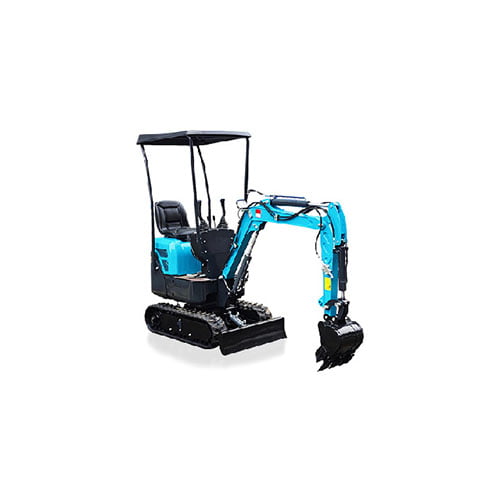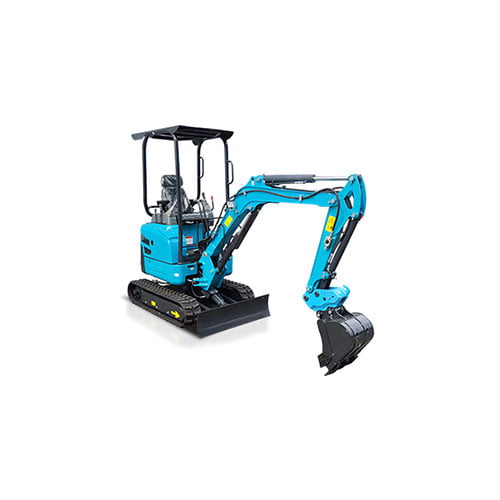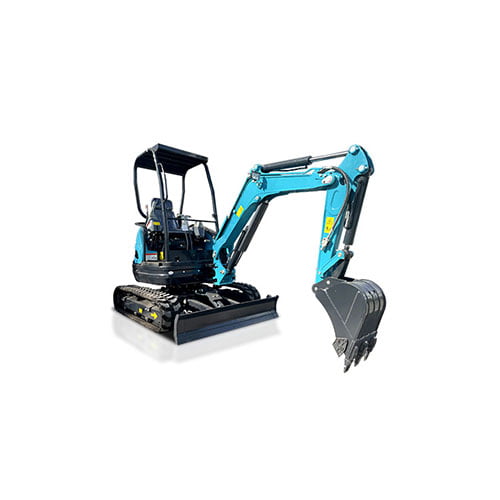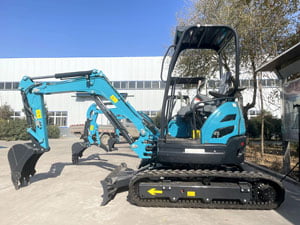Bienvenido a mi blog
Estoy encantada de tenerte aquí. Antes de sumergirnos en el contenido, me encantaría que te unieras a mí en mis plataformas de medios sociales. En ellas comparto mis ideas, me relaciono con una comunidad increíble y te mantengo al día de las últimas novedades. Aquí tienes cómo mantenerte conectado:
📘 Facebook: Conéctate conmigo en Facebook
🔗 LinkedIn: Sígame en LinkedIn
▶️ YouTube: Canal de fabricantes de tractores,Canal de fabricantes de excavadoras
🎥 TikTok: Fabricante de tractores,Fabricante de excavadoras
Emprendamos juntos este viaje. Espero que encuentres el contenido interesante, atractivo y, lo más importante, valioso. Exploremos, aprendamos y crezcamos.
Índice
Introducción

In construction and earthmoving, the Digger vs Excavadora vs Backhoe choice significantly impacts project success. This critical equipment selection challenges contractors, farmers, and construction professionals daily. Each machine in the Digger vs Excavator vs Backhoe trio offers distinct advantages, making their comparison essential for smart investment decisions.
Our comprehensive Digger vs Excavator vs Backhoe analysis evaluates these machines across five key dimensions: power capabilities, attachment versatility, site mobility, operational costs, and ideal applications. The Digger vs Excavator vs Backhoe breakdown goes beyond superficial differences, revealing each machine’s optimal use cases, long-term maintenance implications, and how emerging technologies are influencing equipment selection.
For residential landscaping, large-scale construction, or agricultural work, this definitive Digger vs Excavator vs Backhoe guide delivers the insights needed to make the right choice. You’ll gain practical knowledge from our Digger vs Excavator vs Backhoe comparison that translates to real-world time and cost savings on your projects.
NO 1. Defining the Machines: What Is a Digger vs Excavadora vs Backhoe?
Digger (Mini Excavator)
The term “digger” is often used colloquially to describe compact or mini excavators. These nimble machines typically weigh between 1 to 6 tons and are characterized by:
- A rotating cab that provides 360-degree operation
- Rubber tracks for minimal ground disturbance
- Hydraulic systems optimized for precision work
- Compact dimensions ideal for working in confined spaces
Modern mini excavators have seen significant technological advancements, with many now featuring:
- Advanced hydraulic systems that reduce fuel consumption by up to 15%
- Zero-tail-swing designs for working in extremely tight spaces
- Integrated grade control systems for improved accuracy
- Hybrid power options in some premium models
Excavadora
Full-size excavators represent the heavy artillery of earthmoving equipment. These machines range from 10 to over 90 tons and feature:
- A robust undercarriage with heavy-duty tracks
- Powerful hydraulic systems capable of generating tremendous digging force
- Extended reach capabilities with booms up to 30 feet or more
- Sophisticated attachment mounting systems
Recent innovations in excavator technology include:
- GPS-guided automation for precision digging
- Eco-mode operations that optimize fuel efficiency
- Advanced stability control systems
- Remote monitoring capabilities for fleet management
Backhoe Loader
The backhoe loader is the Swiss Army knife of construction equipment, combining:
- A tractor-like chassis with four-wheel drive
- A front-mounted loader bucket
- A rear-mounted excavator arm
- Mid-range power typically between 70-100 horsepower
Modern backhoe innovations include:
- Quick-change attachment systems
- Improved cab ergonomics and visibility
- Enhanced hydraulic efficiency
- Telematics systems for performance monitoring
NO 2. Digger vs Excavadora vs Backhoe: 5 Key Comparison Factors
To provide a comprehensive comparison, we’ve analyzed these machines across five critical dimensions that matter most to operators and project managers:
| Factor | Digger (Mini Excavator) | Excavadora | Backhoe Loader |
|---|---|---|---|
| Optimal Project Size | Small to medium (residential, utilities) | Large-scale (commercial, mining) | Medium (municipal, farming) |
| Profundidad de excavación | 8-14 feet | 15-30+ feet | 12-16 feet |
| Lifting Capacity | 1,000-3,000 lbs | 5,000-20,000+ lbs | 3,000-5,000 lbs |
| Maniobrabilidad | Excellent (zero tail swing models) | Poor in tight spaces | Good (articulated steering) |
| Opciones de fijación | Limited (mostly digging) | Extensive (hammers, grapples, etc.) | Moderate (loader + backhoe) |
| Eficiencia de combustible | 2-4 gallons/hour | 5-10+ gallons/hour | 3-5 gallons/hour |
| Confort del operador | Basic suspension seat | Full suspension, climate control | Basic to moderate comfort |
| Transport Needs | Easily towable | Requires lowboy trailer | Can drive on roads |
| Typical Lifespan | 5,000-8,000 hours | 10,000-15,000 hours | 7,000-10,000 hours |
| Valor de reventa | Holds 50-60% after 5 years | Holds 40-50% after 5 years | Holds 45-55% after 5 years |
This expanded comparison table provides a more nuanced understanding of how these machines differ across multiple operational parameters. The data reveals that while excavators offer superior power and depth, they sacrifice maneuverability and transport convenience. Backhoes provide the best balance of capabilities, while diggers excel in specialized, space-constrained applications.
NO 3. Power & Performance: Breaking Down Capabilities


Digger Performance Characteristics
Modern mini excavators have seen remarkable improvements in power density. A typical 3-ton model now delivers:
- Hydraulic flow rates of 15-25 GPM
- Digging forces between 6,000-9,000 lbf
- Swing torque sufficient for most light demolition
- Pump pressures exceeding 3,500 psi
These machines shine in:
- Precision trenching for utilities
- Landscape grading and pond digging
- Foundation work for small structures
- Indoor demolition projects
Excavator Performance Benchmarks
A mid-size 20-ton excavator typically features:
- Hydraulic systems delivering 50-80 GPM
- Arm digging forces over 20,000 lbf
- Bucket breakout forces exceeding 30,000 lbf
- Lifting capacities rivaling small cranes
These capabilities make them indispensable for:
- Deep foundation excavation
- Mass earthmoving on large sites
- Heavy demolition projects
- Mining and quarry operations
Backhoe Performance Metrics
A standard backhoe loader offers:
- Loader lift capacity of 3,000-4,000 lbs
- Backhoe digging depth to 14-16 feet
- Travel speeds up to 25 mph
- Hydraulic flow around 20-30 GPM
This balanced performance supports:
- Road maintenance and repair
- Utility installation and repair
- Agricultural earthmoving
- General construction site work
NO 4. Cost Analysis: Purchase Price & Lifetime Expenses
Initial Purchase Costs
The financial commitment varies dramatically:
- Miniexcavadoras: 25,000−25,000−150,000
- Compact 1-ton models: 25,000−25,000−40,000
- Mid-size 5-ton models: 50,000−50,000−80,000
- Premium 8-ton models: 90,000−90,000−150,000
- Excavadoras: 80,000−80,000−500,000+
- 10-ton class: 80,000−80,000−120,000
- 20-ton class: 150,000−150,000−250,000
- 30-ton+ class: 300,000−300,000−500,000+
- Retrocargadoras: 50,000−50,000−120,000
- Basic models: 50,000−50,000−70,000
- Premium models: 80,000−80,000−120,000
Operating Costs Breakdown
- Consumo de combustible:
- Diggers: 15−15−30/hour
- Excavators: 50−50−100+/hour
- Backhoes: 20−20−40/hour
- Costes de mantenimiento:
- Diggers: 5−5−10/operating hour
- Excavators: 10−10−20/operating hour
- Backhoes: 7−7−15/operating hour
- Downtime Costs:
- Diggers: Minimal impact (easily replaced)
- Excavators: Significant project delays
- Backhoes: Moderate impact
Total Cost of Ownership Projections
A 5-year TCO analysis for medium-use scenarios (1,500 hours/year):
- 5-ton Mini Excavator: ~$150,000
- 20-ton Excavator: ~$400,000
- Backhoe Loader: ~$200,000
These projections include purchase price, fuel, maintenance, repairs, and estimated resale value.
NO 5. Real-World Applications & Selection Guide


When to Choose a Digger
Ideal Scenarios:
- Urban utility work with space constraints
- Residential landscaping projects
- Indoor demolition and renovation
- Small-scale agricultural tasks
Case Study: A plumbing contractor serving suburban areas found that replacing one backhoe with two mini excavadoras increased productivity by 40% for trenching projects while reducing property damage complaints.
When to Choose an Excavator
Critical Applications:
- Large-scale site development
- Deep foundation excavation
- Major demolition projects
- Mining and material handling
Case Study: A civil engineering firm working on a highway expansion project calculated that using two 30-ton excavators instead of four backhoes reduced their earthmoving timeline by 35% while lowering fuel costs by 28%.
When to Choose a Backhoe
Optimal Uses:
- Municipal road maintenance
- General farm work
- Medium-sized construction sites
- Projects requiring both digging and loading
Case Study: A small town public works department found that maintaining two backhoes instead of separate loaders and excavators saved $75,000 annually in equipment costs while maintaining service levels.
Conclusión
When choosing between diggers, excavadoras, and backhoes, prioritize project scale – mini excavators for small jobs, full-size excavators for major projects, and backhoes for medium tasks. Consider total costs beyond purchase price, as excavators’ higher productivity may justify their expense while diggers offer better ROI for specialized work. Modern features like GPS and hybrid systems are changing equipment capabilities, with backhoes providing versatility and excavators/diggers delivering specialized efficiency. Factor in emerging technologies and emission regulations to future-proof your investment. Modern tech like GPS and hybrids further shapes the Digger vs Excavator vs Backhoe debate. Choose based on project needs, budget, and future regulations.
PREGUNTAS FRECUENTES
¿Puede un miniexcavadora replace a backhoe for utility work?
In the Digger vs Excavator vs Backhoe comparison, mini excavators excel in tight urban spaces for precision tasks like fiber optic installations, offering better maneuverability than backhoes. However, backhoes remain superior in the Digger vs Excavator vs Backhoe debate for projects requiring both digging and loading capabilities or frequent relocation between sites.
How do emissions regulations affect equipment choices?
Tier 4 Final and upcoming Stage V regulations favor mini excavators due to their smaller, cleaner engines. Large excavators face the toughest compliance challenges, increasing costs. Backhoes offer a middle ground, while urban projects increasingly require electric/hybrid options despite higher initial investment.
What’s the learning curve difference between these machines?
Mini excavators are easiest to learn (40-80 hours), while full-size excavators require 100-200 hours for safe operation. Backhoes need 60-120 hours due to dual-loader/excavator controls. Certification requirements also vary by machine type and region, impacting training costs.
How has attachment technology evolved recently?
Modern attachments have transformed the Digger vs Excavator vs Backhoe capabilities equation, featuring quick-change systems and GPS precision. These advances allow smaller machines in the Digger vs Excavator vs Backhoe spectrum to handle tasks previously requiring larger equipment.
What maintenance differences should buyers consider?
The Digger vs Excavator vs Backhoe maintenance comparison reveals: mini excavators have simpler systems but tighter spaces, excavators offer better access but more complexity, while backhoes require dual-system care. Costs vary 30-50% between these machine types.




